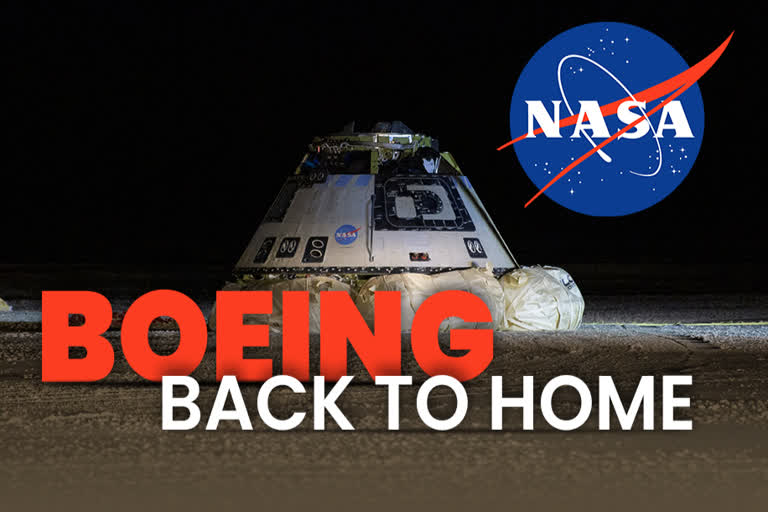Washington: Boeing safely landed its crew capsule in the New Mexico desert on Sunday after an aborted flight to the International Space Station that could hold up the company's effort to launch astronauts for NASA next year.
The Starliner descended into the Army's White Sands Missile Range in the frigid predawn darkness ending a two-day demo that should have lasted more than a week. A trio of red, white and blue parachutes popped open and airbags also inflated around the spacecraft to ease the impact.
“We pinpoint landed it," NASA Administrator Jim Bridenstine said at a post-landing briefing.
The successful return capped a rocky start to a mission that was supposed to include a docking with the space station. Managers will review all the data before deciding whether to do another test flight or go straight to flying astronauts, said NASA's Steve Stich.
After seeing this first test flight cut short and the space station docking cancelled because of an improperly set clock on the capsule, Boeing employees were relieved to get the Starliner back.
Recovery teams cheered as they watched the capsule drift down through the air and make a bull's-eye landing. The touchdown was broadcast live on NASA TV; infrared cameras painted the descending capsule in a ghostly white.
As the sun rose, close-up views showed the large white and black capsule upright — with hardly any scorch marks from re-entry — next to a U.S. flag waving from a recovery vehicle. The astronauts assigned to the first Starliner crew — two from NASA and one from Boeing — were part of the welcoming committee.
“A beautiful soft landing,” said NASA astronaut Mike Fincke. “Can't wait to try it out."
It was the first American-made capsule designed for astronauts to make a ground landing after returning from orbit. NASA's early crew capsules — Mercury, Gemini, and Apollo — all had splashdowns. SpaceX's Dragon capsule which made its orbital debut last winter with a test dummy also aims for the ocean at the mission's end.
Minutes after touchdown, top NASA and Boeing officials poured into Mission Control in Houston to congratulate the team. The newly returned Starliner also got a personalized name: Calypso, after Jacques Cousteau's boat.
The capsule's first trip to space began with a smooth rocket ride from Cape Canaveral on Friday. But barely a half-hour into the flight, it failed to fire its thrusters to give chase to the space station and ended up in the wrong orbit.
Read Also: 'Our own orbiter had located Vikram,' ISRO chief counters NASA claim
The problem was with the Starliner's internal clock; it did not sync up with the Atlas V rocket and was off by 11 hours, according to Boeing's Jim Chilton.
The capsule burned so much fuel trying to orient itself in orbit that there wasn't enough left for a space station rendezvous. Flight controllers tried to correct the problem, but between the spacecraft's position and a gap in communications, their signals did not get through. They later managed to reset the clock.
Boeing is still trying to figure out how the timing error occurred. The mission lasted nearly 50 hours and included 33 orbits around the Earth, about 100 orbits fewer than planned.
A test dummy named Rosie the Rocketeer — after Rosie the Riveter from World War II — rode in the commander's seat. Also returning were holiday presents, clothes and food that should have been delivered to the space station crew.
